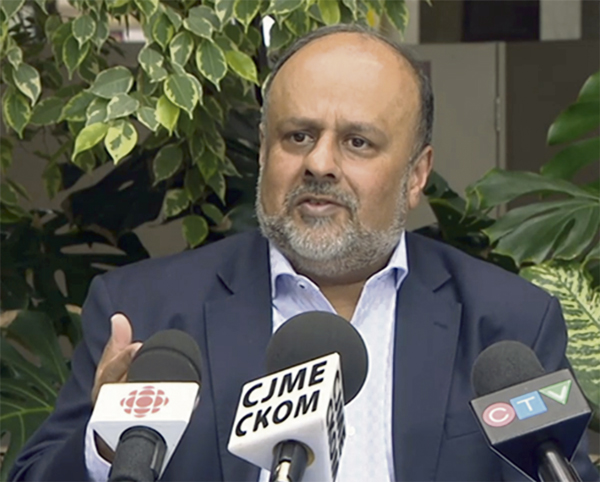Updated as of 4:37 p.m., Wednesday, May 20.
A seventh person in Saskatchewan who tested positive for COVID-19 has died.
In a Wednesday news release, the provincial government said the resident was in their 60s and from the northern region. This area includes Prince Albert, North Battleford, Meadow Lake and Melfort.
The specific community will not be released to respect the patient and the family’s privacy, said Chief Medical Health Officer Dr. Saqib Shahab: “There’s no public health purpose served by me disclosing the location of the death.”
The government also reported 21 new, confirmed cases of the virus on Wednesday—16 of these cases are in the far north, including nine in La Loche and six in Beauval, four are in the north and one is in the Saskatoon area.
A total of 620 cases have been reported since the beginning of the pandemic, and 120 are currently considered active.
Twenty-four more people have recovered, bringing the province’s total number of recoveries to 494.
Currently, there are four people in hospital with COVID-19, all in Saskatoon. One is in inpatient care and three are in the ICU.
Also on Wednesday, the Saskatchewan Health Authority (SHA) announced it will be further expanding testing starting on Monday.
The SHA listed the following expanded testing guidelines:
- Testing available to anyone working outside of their homes, including those currently working or returning to work as part of the Re-Open Saskatchewan plan.
- Testing immunocompromised asymptomatic individuals such as cancer patients before immunosuppressive procedures like chemotherapy.
- Testing all patients upon admission or in advance of a planned admission to an acute care hospital for a stay greater than 24 hours. This includes all expectant mothers entering a health facility to give birth.
- Increased testing for populations that are homeless or living in other vulnerable settings.
- Testing available to all health care workers caring for immunocompromised patients.
- Mobile testing for anyone who desires a test in high volume work settings such as factories and industrial settings.
Current guidelines include testing those with worsening symptoms of COVID-19 and all residents upon admission or re-admission to a long-term care or personal care home.
Questioned why testing isn’t being expanded earlier as more businesses reopen, SHA CEO Scott Livingstone said that’s not the primary reason for the expansion.
“The number one reason why the expanded testing criteria will be put in place next week is so that we can prepare the staff at 811 HealthLine for the proper understanding and workflow associated with the expanded targeted guidelines because they are extensive,” he said.
Phase one of the SHA’s plan to resume health care services began on Tuesday. This phase includes the resumption of home care, public health inspections, mental health and addictions services, as well as six-week urgent surgeries.
Livingstone said there’s no date set yet for phase two as the SHA monitors the effects of the first phase.
The SHA is also reminding the public that safety protocols are in place. Waiting rooms will promote physical distancing, virtual health care is encouraged when possible and there’s additional screening in all health care facilities.
“You will experience longer waits as a result and we thank you for your patience and understanding,” added Livingstone.
He also gave an updated Effective Reproductive Number (ERN) for the province, which reflects how many people one person with COVID-19 would transmit the virus to.
In Saskatchewan’s north and far north, which holds the majority of the cases, that number is 1.87. The rest of the province is holding steady at 0.62.
An ERN consistently below one shows that the virus is being managed effectively.
Of the 620 cases in the province:
- 139 cases are related to travel, 339 are community contacts (including mass gatherings), 71 have no known exposures and 71 are under investigation by local public health.
- 49 cases are health care workers; however, the source of the infections isn’t related to their work environments in all instances.
- 242 of the cases are from the far north, 165 are from the Saskatoon area, 110 are from the north, 76 are from the Regina area, 15 are from the south and 12 are from the central region.
- 88 cases involve people 19 years of age and under, 223 cases are in the 20-39 age range, 187 are in the 40-59 age range, 104 are in the 60-79 age range and 18 are in the 80-plus range.
- 51 per cent of the cases are females and 49 per cent are males.


